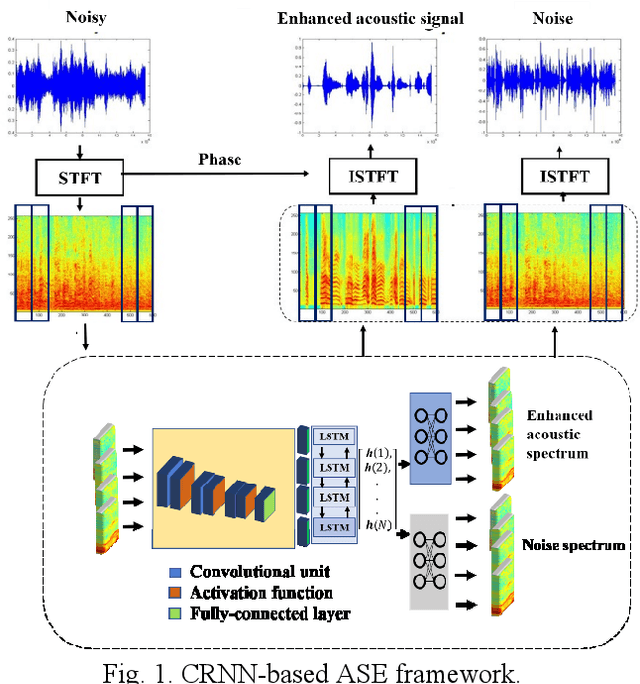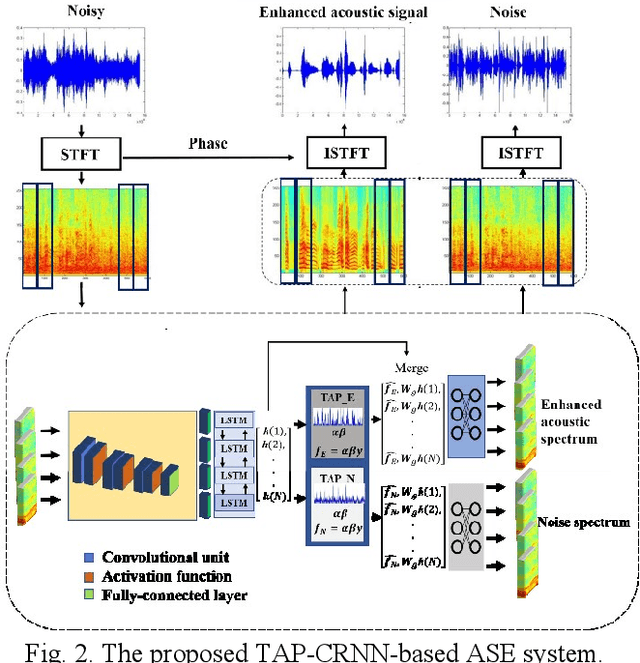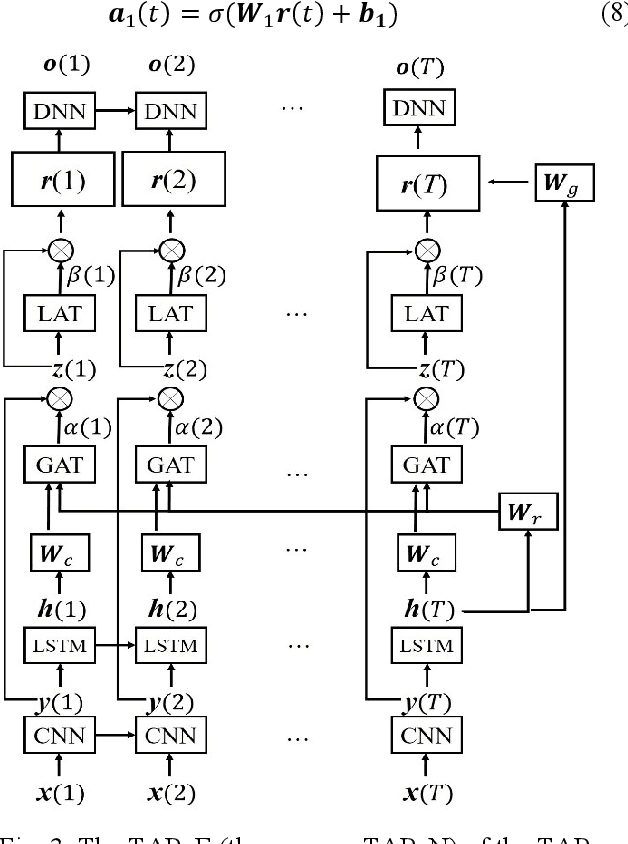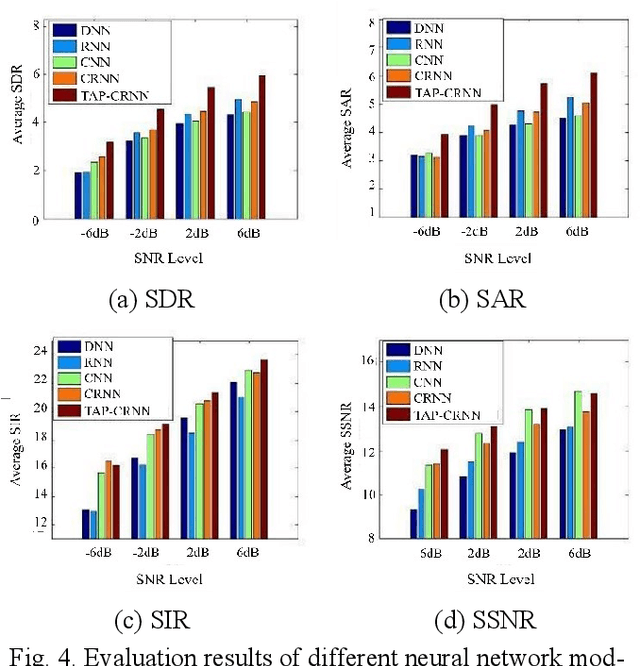A Novel Temporal Attentive-Pooling based Convolutional Recurrent Architecture for Acoustic Signal Enhancement
Paper and Code
Jan 24, 2022



In acoustic signal processing, the target signals usually carry semantic information, which is encoded in a hierarchal structure of short and long-term contexts. However, the background noise distorts these structures in a nonuniform way. The existing deep acoustic signal enhancement (ASE) architectures ignore this kind of local and global effect. To address this problem, we propose to integrate a novel temporal attentive-pooling (TAP) mechanism into a conventional convolutional recurrent neural network, termed as TAP-CRNN. The proposed approach considers both global and local attention for ASE tasks. Specifically, we first utilize a convolutional layer to extract local information of the acoustic signals and then a recurrent neural network (RNN) architecture is used to characterize temporal contextual information. Second, we exploit a novelattention mechanism to contextually process salient regions of the noisy signals. The proposed ASE system is evaluated using a benchmark infant cry dataset and compared with several well-known methods. It is shown that the TAPCRNN can more effectively reduce noise components from infant cry signals in unseen background noises at challenging signal-to-noise levels.
 Add to Chrome
Add to Chrome Add to Firefox
Add to Firefox Add to Edge
Add to Edge